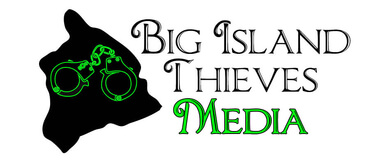The awai‘i Department of Health (DOH) is pausing use of the Johnson & Johnson COVID-19 vaccine while the U.S. Centers for Disease Control and Prevention (CDC) and the U.S. Food and Drug Administration (FDA) review data involving six cases in which individuals who received the Johnson &Johnson vaccine developed blood clots.
“We’re are pausing out of an abundance of caution. Vaccine safety is of the utmost importance,” said Health Director Dr. Elizabeth Char. “The risk of developing a blood clot is very low. About 6.8 million Johnson & Johnson vaccines have been administered in the United States. Six people have developed blood clots.”
The blood clots, called cerebral venous sinus thrombosis, occurred in women ages 18 to 48. Symptoms occurred 6 to 13 days after vaccination.
There are no reports of anyone in Hawai‘i developing blood clots after receiving a Johnson & Johnson vaccine. People who received a Johnson & Johnson vaccine within the past few weeks should monitor themselves for symptoms and contact their healthcare provider if they experience a severe headache, abdominal pain, leg pain, or shortness of breath.
“I still have confidence in the vaccine. These adverse events appear to be extremely rare, but this transparent and deliberate pause ensures the medical community is aware of the potential adverse events.” Char said.
Some vaccination providers scheduled to administer Johnson & Johnson vaccine in the coming days may offer Pfizer or Moderna vaccine instead.
The Pfizer and Moderna vaccines, which use different delivery technology than the Johnson & Johnson vaccine, continue to be used in Hawai‘i and around the country. Scheduling opportunities can be found on the registration page at hawaiicovid19.com.
The CDC-FDA released this statement:
As of April 12, more than 6.8 million doses of the Johnson & Johnson (Janssen) vaccine have been administered in the U.S. CDC and FDA are reviewing data involving six reported U.S. cases of a rare and severe type of blood clot in individuals after receiving the J&J vaccine. In these cases, a type of blood clot called cerebral venous sinus thrombosis (CVST) was seen in combination with low levels of blood platelets (thrombocytopenia). All six cases occurred among women between the ages of 18 and 48, and symptoms occurred 6 to 13 days after vaccination. Treatment of this specific type of blood clot is different from the treatment that might typically be administered. Usually, an anticoagulant drug called heparin is used to treat blood clots. In this setting, administration of heparin may be dangerous, and alternative treatments need to be given.
CDC will convene a meeting of the Advisory Committee on Immunization Practices (ACIP) on Wednesday to further review these cases and assess their potential significance. FDA will review that analysis as it also investigates these cases. Until that process is complete, we are recommending a pause in the use of this vaccine out of an abundance of caution. This is important, in part, to ensure that the health care provider community is aware of the potential for these adverse events and can plan for proper recognition and management due to the unique treatment required with this type of blood clot.
Right now, these adverse events appear to be extremely rare. COVID-19 vaccine safety is a top priority for the federal government, and we take all reports of health problems following COVID-19 vaccination very seriously. People who have received the J&J vaccine who develop severe headache, abdominal pain, leg pain, or shortness of breath within three weeks after vaccination should contact their health care provider. Health care providers are asked to report adverse events to the Vaccine Adverse Event Reporting System at https://vaers.hhs.gov/reportevent.html.
CDC and FDA will provide additional information and answer questions later today at a media briefing. A recordingExternal Link Disclaimer of that media call is available on the FDA’s YouTube channel.



